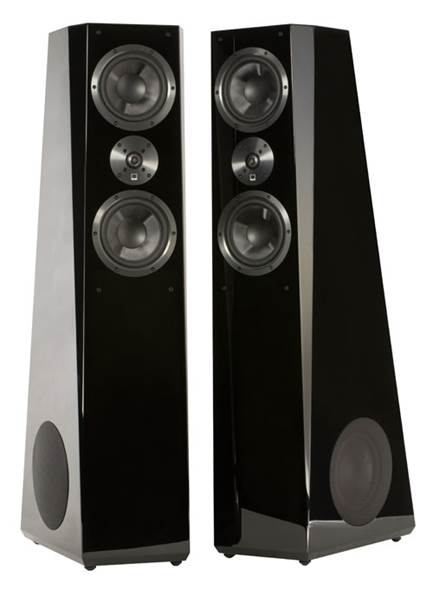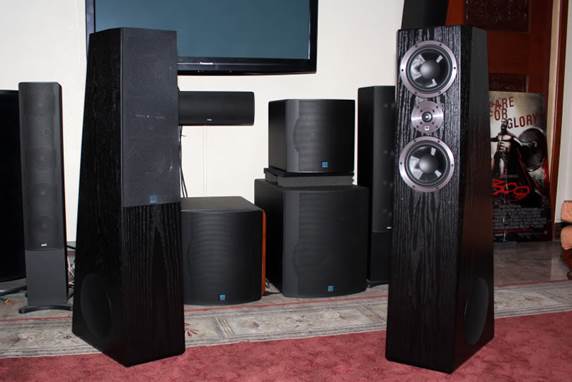The SVS Ultra Towers are big speakers. At 1.14m tall, our
piano-black review pair dwarfs the majority of the competition at this price.
They’re deep too, due to their unique slanted trapezium shape. Want
understatement? Move on.
Of course, one of the benefits of that big cabinet is that
it allows for big drivers – and plenty of them. Each of the 3.5-way Ultra
Towers has a 25mm aluminum dome tweeter, dual 16.5cm glass-fiber mid-range
drivers and dual horizontally opposed 20cm woofers, mounted in this way to help
reduce distortion.

The SVS Ultra
Towers
There’s a rear-firing port at the back too, which, combined
with the side-firing woofers, means giving the Ultra Towers really need space.
Put them too close to a back wall and they’ll sound overly bassy; too close to
a side wall and they can sound closed-in.
They sound as big as they look
The bigger-is-better theme doesn’t stop at design. If you’re
looking for speakers to impress in scale, volume and bass weight, you’ll get
that by the shed-load.
Going loud enough to seriously bother your neighbors, these
speakers excel in deep, tight, impactful bass which, for all its heft, is still
agile and responsive.
But they aren’t without fault. The Ultra Towers can bring a
feeling of heaviness when it’s not really wanted, and lack the ability to
handle more delicate tracks quite as well as their more articulate
counterparts.

Great scale and
bass weight
And the weighty bass only emphasizes the Ultra Towers’
rather unrefined treble, as a run-through of Eminem’s treble-heavy Berzerk
shows. There’s a harsh edge and lack of detail to the treble that can sound
rather unpleasant at certain frequencies and, while it improved during testing,
this was still noticeable after several days of solid playback.
So, be careful with system-matching – and feed these
speakers the best quality tracks you can. They aren’t very forgiving with poor
recordings.
Not the last word in finesse
Subtlety and dynamics are a little awkward too. Listening to
Harvey Two-Face from the Dark Knight soundtrack, we don’t get the sense of
build-up to a crescendo we do with something like the Spendor A6Rs. It’s almost
as if the SVSes are scared to go quiet, so you don’t hear that dynamic shift as
strongly; they start off loud, only to go louder still.
However, the scale these speakers offer is undeniable, and
they ensure a spacious, open sound with good stereo imaging – each instrument
is placed well in the mix. Individual notes can lack the same sense of insight
and texture though, and the start and stop of notes can be missed, once again
showing up the Ultra Towers’ lack of subtlety and precision compared with
competitors.
And despite the surprisingly agile bass, the Ultra Towers
still lack bite. Vocals are clear, articulate and well-balanced, but lacking a
little pep. This leaves tracks feeling rather emotionless, as if the artist was
just doing a guide track rather than the final recording.

And despite the
surprisingly agile bass, the Ultra Towers still lack bite.
These speakers are a tale of two halves. What they do well
is instantly impressive, but take a little longer with them and the story
begins to unravel. You get a lot of speaker for your money, but there are more
rounded, better executed speakers out there at this price.
Rating
For:
Great scale; superb bass; powerful; good stereo imaging; clear, articulate
midrange.
Against:
Unrefined treble; lack dynamic punch; unsubtle; need a big room to shine.
Verdict: Great scale and bass weight, but there are
too many gripes here at this price.
|
Specifications
·
Sensitivity: 88dB
·
Impedance: 8 ohms
·
Amplified power: 20 – 300W
·
Dimensions: 45” x 13.8” x 16.25”
·
Weight: 65 pounds
|